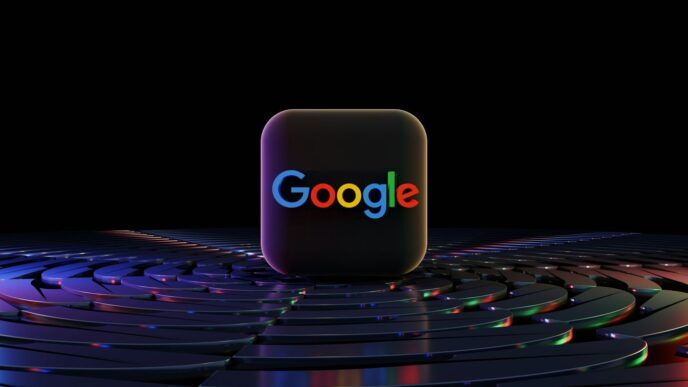Picking a phone plan these days can be a headache, especially if you’re trying to save money. There are so many choices now, with new companies popping up all the time and big carriers offering cheaper options too. Whether you use your phone for endless scrolling, just the basics, or something in between, you don’t have to spend a fortune to stay connected. This list rounds up the best cheap phone services for 2025, so you can find something that works without breaking your budget.
Key Takeaways
- Mint Mobile stands out for its affordable three-month starter plans, making it a great pick for most people.
- Tello Mobile lets you build your own plan, so you only pay for what you need—perfect for light users or anyone on a tight budget.
- US Mobile offers flexible plans with good data options and is a solid choice for both individuals and families.
- Visible Wireless gives you unlimited data on Verizon’s network at a lower price, which is great for heavy data users.
- TextNow is a unique option if you mostly call and text, since it offers free service with ads—just pay a small fee to get started.
Mint Mobile
If you’re on the hunt for cheap phone service in 2025, Mint Mobile is still one of the best choices around for people who want low rates without sacrificing speed or coverage. Mint uses T-Mobile’s nationwide 5G and 4G LTE network, so you’ll get good signal pretty much anywhere T-Mobile covers. But their real advantage is the pricing if you’re willing to pay for several months up front.
What you need to know about Mint Mobile:
- Plans are prepaid for either 3, 6, or 12 months at a time; the longer you pay for, the better the deal.
- The 3-month intro offers are particularly cheap, with plans starting at $15/month for 5GB of data. The 15GB plan is popular at $20/month.
- After you use up your regular data allowance, you’re not cut off, but your speeds drop to 128kbps – not enough for TikTok or YouTube, but okay for text and emails.
- Free talk and text to Canada, Mexico, and the UK are included on all plans.
Here’s a quick look at their most current pricing:
| Data Allowance | 3-Month Intro Price | Renewal Price (12-Month) |
|---|---|---|
| 5GB | $15/mo | $15/mo |
| 15GB | $20/mo | $20/mo |
| 20GB | $25/mo | $25/mo |
| Unlimited* | $30/mo | $30/mo |
*Unlimited: After 40GB of use, speeds slow down but data isn’t cut off.
Things to keep in mind:
- No physical Mint stores, so you’ll set up online or in the Mint Mobile app.
- Customer service is online or by phone, and no in-store help.
- There aren’t family discounts, but one account can manage several lines.
- Your data can get deprioritized in busy areas (like a packed sports stadium), but day-to-day it’s usually not an issue.
For anyone willing to pay up front and bring their own phone, Mint Mobile takes the stress out of monthly bills and has some of the friendliest prices on the market. If you’re happy on T-Mobile’s network, it’s tough to beat for the money.
Tello Mobile
Tello Mobile is one of those carriers that flies under most people’s radar, but honestly, it’s one of the most flexible options for anyone on a tight budget. Tello stands out because you can tailor your monthly plan exactly to your needs, instead of picking from a few pre-set packages like most providers make you do.
You can decide how much data (from none up to unlimited) and how many minutes (from zero, in increments, to unlimited) you actually want. If you’re just looking to cover the basics—like giving your kid their first phone or setting up a line for your grandma who doesn’t burn through data each month—it’s hard to beat Tello’s build-your-own model. Plans start absurdly cheap at $5 per month if you choose the bare minimum, and the most expensive unlimited option tops out at $25 monthly. You’re not locked into a year either; it’s all paid month-to-month.
Here’s a quick table showing how Tello stacks up:
| Data | Minutes | Monthly Price |
|---|---|---|
| 0 GB | 100 mins | $5 |
| 2 GB | 300 mins | $8 |
| 5 GB | Unlimited | $14 |
| Unlimited* | Unlimited | $25 |
*First 35GB at high speed, then reduced speed
Some upsides to picking Tello:
- Build exactly the plan you need—no paying for fluff you won’t use
- Free hotspot included with every plan, even the super cheap ones
- Monthly commitment: no annual prepaid contracts required
A few things to watch out for:
- If you need a ton of fast data every month, there are better choices (your speeds may drop after a certain point)
- Runs on T-Mobile’s network, so coverage can be hit or miss depending where you live
All in all: Tello is about saving money, and keeping things simple. If you know your usage is low—or you just want total control over your bill—this is a really strong pick in 2025.
US Mobile

If you’ve ever felt stuck with just one network, US Mobile breaks that mold. This carrier lets you choose between Verizon, AT&T, and T-Mobile’s full networks, making it one of the most flexible options out there.
What sets US Mobile apart isn’t just its pick-your-network style. There’s also a lot to like about their pricing and international features. Their Unlimited Starter and Unlimited Premium plans don’t feel like watered-down budget options:
| Plan | Monthly Price | Data (US) | Hotspot | International Features |
|---|---|---|---|---|
| Unlimited Starter | $25 ($19/mo annual) | 70GB high-speed | Yes (with limits) | Basic |
| Unlimited Premium | $50 | 100GB high-speed | 100GB | Up to 20GB in 180+ countries |
Here are some things that really stand out:
- You can switch networks twice for free (then it’s $2 per switch)
- Customer service is quick, and the app’s solid
- Speeds only slow to 1Mbps after you use up your main data, so your phone never really gets stuck
- Annual payments drop the price significantly if you don’t mind paying upfront
But, a few things aren’t perfect:
- If you like to try different networks a lot, switching does add up after that initial free limit
- International perks are best on the top plan, which is pricier
For anyone who wants a plan you can tweak, or if you move around a lot and coverage matters to you, US Mobile is kind of a no-brainer. Budget-conscious users who stick to one place might want something simpler, but if flexibility and international travel are on your radar, this one should be high on your list.
Visible Wireless
Visible Wireless is one of those phone services that a lot of people overlook at first, but it’s actually a strong choice if you want a cheap, straightforward plan with unlimited data. Its biggest perk is the truly unlimited data with no slowdowns due to deprioritization, which is almost unheard of for budget carriers. The base Visible plan rides on Verizon’s 5G and 4G LTE networks, so coverage is wide and reliable for most people.
Here’s a quick breakdown of Visible’s main plans as of late 2025:
| Plan Name | Monthly Price | Key Features |
|---|---|---|
| Visible | $25 | Unlimited data, talk & text, 5 Mbps hotspot |
| Visible Plus | $30 | Unlimited high-speed data, 10 Mbps hotspot, access to Verizon 5G Ultra Wideband |
| Visible Plus Pro | $40 | All Visible Plus perks, smartwatch support, international features, faster unlimited hotspot |
Some things you’ll notice right away using Visible:
- There are never any surprise taxes or fees—they’re baked right into your monthly bill.
- You don’t have to sign contracts or worry about credit checks.
- Mobile hotspot is unlimited (with speed caps, depending on the plan), so you can tether a laptop or tablet without thinking twice.
Of course, no service is perfect. Some folks mention that customer support can be slow—since it’s all online chat—with no brick-and-mortar shops to visit. But if you’re comfortable doing things digitally, that may not be a huge issue.
Visible also just launched a third plan tier. For heavy users who want smartwatch connectivity or better international perks, the Visible Plus Pro option could actually be worth the step up in cost. You still get unlimited high-speed data, and the plan now lets you take advantage of extras like included wearable service and boosted hotspot speeds if you’re willing to pay a bit more up front.
If you use lots of data or want something simple, Visible Wireless definitely stands out from most cheap phone plans. Just double-check that Verizon’s network is good in your area before switching. Otherwise, you might find plans from Mint Mobile or Tello suit your needs better.
Google Fi Wireless
Google Fi Wireless stands out for folks who need a flexible, reliable phone plan on a budget, especially if you like using your phone for hotspot data or you’re part of a family looking to cut monthly bills. The real draw here is their Unlimited Standard plan—just $100 a month for four lines, which breaks down to $25 per person before taxes and fees. That’s hard to beat if you’ve got a small group or family; even solo plans manage to keep things relatively affordable compared to big names.
Here are some quick facts about the Unlimited Standard tier:
| Plan | Price (1 line) | Price (4 lines) | High-Speed Data | Hotspot Data (High-Speed) |
|---|---|---|---|---|
| Fi Unlimited Std. | $50/month | $100/month | 50GB | 25GB |
A few things to like (and keep in mind):
- Runs on T-Mobile’s 5G network, which is pretty solid in most areas.
- Includes free calls to Canada and Mexico.
- Once you blow through that 50GB on each line, your speeds drop to 256kbps, and hotspot use counts against your data cap.
- Taxes and fees are extra, so your bill will be a bit higher than the sticker price.
If you’re big on streaming video or you gobble up a lot of mobile data every month, throttling might get annoying. But for most people—maybe a parent with teens or a couple of roommates—the combination of solid network coverage and competitive pricing makes Google Fi an easy pick. Worth noting: the service is best on Android, but iPhones are getting easier to use with it every year. Just expect a little extra setup if you go that route.
Cricket Wireless

Cricket Wireless keeps things pretty simple for budget-minded folks who don’t want a lot of extras tacked onto their bill. Owned by AT&T, Cricket has made a name by rolling all taxes and fees into their advertised prices, which takes out some of the guesswork month to month. One of their biggest selling points is how straightforward it is—what you see is really what you pay.
If you’re looking to cover a family or just need a few lines, Cricket is worth a look. Their Unlimited Standard plan provides four lines for $100 and that’s with 50GB of high-speed data per line, plus a solid chunk of hotspot data:
| Plan | Lines | Price | Data (per line) | Hotspot | Extras |
|---|---|---|---|---|---|
| Unlimited Standard | 4 | $100/mo | 50 GB high-speed | 25 GB total | Free calls to Canada |
More on its four-line Unlimited Standard plan.
A few things that really stand out about Cricket Wireless:
- There’s no extra charge for taxes or hidden junk fees, so your bill is predictable.
- Their plans are especially affordable when you bundle for multiple people.
- They include mobile hotspot on upper-tier plans (though not every plan has it), and the data cap is actually pretty generous compared to some competitors.
- Free calls to Canada are in the mix for some plans, which can come in handy.
Phone selection through Cricket’s store is kind of basic, especially if you’re hoping for the latest Android or iPhone. You might have better luck buying an unlocked phone separately and just using Cricket’s SIM. Still, for folks who use a moderate amount of data and don’t want frills like international roaming or a ton of extras, it’s a solid choice that keeps costs under control every month.
Metro by T-Mobile
Metro by T-Mobile is a solid prepaid choice if you’re trying to keep your phone bill under control while still enjoying reliable service. The biggest thing that stands out with Metro is that it’s owned by T-Mobile, so you get access to T-Mobile’s wide 5G network, which is honestly a massive perk if you use a lot of data.
Here’s a simple table with their typical plan options as of late 2025:
| Plan | Price/Month | High-Speed Data | Mobile Hotspot | Lines |
|---|---|---|---|---|
| 5 GB | $30 | 5 GB | No | 1-4 |
| 10 GB | $40 | 10 GB | Yes (Hotspot) | 1-4 |
| Unlimited (35GB priority) | $50 | Unlimited* | Yes (15 GB Hotspot) | 1-4 |
*Unlimited data plans get 35GB of priority speed; after that, data may slow down during congestion.
What keeps folks coming back to Metro?
- Simple plans. There aren’t a hundred different choices to sort through. It’s basically three plans, all pretty easy to understand.
- Walk-in support. You can still head to a real store and talk to a person if you’re stuck, which isn’t true for all budget carriers.
- Family deals. The price per line drops if you add more people to your plan—great for families or roommates.
There are a few things to watch out for. Metro’s plans can sometimes be a few dollars more than what T-Mobile’s own prepaid plans charge if you only need a single line. After you hit your high-speed data limit (for example, the 35GB mark on the unlimited plan), your data might slow down if the T-Mobile network is busy. This is annoying if you stream a ton of video or use your phone for everything. And don’t expect international roaming—Metro doesn’t offer much here, so it’s best if you mostly use your phone in the US.
Bottom line: Metro by T-Mobile is about as hassle-free as prepaid plans get. If you want solid network coverage, the ability to walk into a store for help, and the chance to knock a few bucks off with family lines, it’s definitely worth a look.
Consumer Cellular
Consumer Cellular is a standout for anyone who wants simple plans, friendly customer service, and the flexibility of no contracts. It’s not just for seniors—anyone can use it and benefit from the affordable prices and straightforward service.
Here are a few reasons a lot of people, especially older adults, end up choosing Consumer Cellular:
- Plans start at around $20 per month, which keeps things pretty budget-friendly. That includes options as simple as unlimited talk and text with 1GB of data.
- If you’re an AARP member, you can save even more. There’s a 5% discount just for being a member.
- They won’t lock you into a contract. You can switch up your plan or leave whenever you want.
- Customer support is US-based, and honestly, it’s way more patient and clear than most competitors. Folks new to smartphones can even get step-by-step guides and video tutorials.
- They make it easy to get started—either bring your own phone or grab one through an installment plan in stores like Target.
Here’s a quick look at a couple plan options:
| Plan Description | Monthly Price | Data Included |
|---|---|---|
| Unlimited talk, text, 1GB data | $20 | 1GB |
| Unlimited talk, text, unlimited data | $65 (for 2 lines) | 50GB (then slowed) |
A big highlight is reliability, since they run on AT&T’s network. That means good coverage in most places. Just keep in mind, hotspot use isn’t enabled by default—you’ll need to call support to turn it on if that matters to you.
International travelers might want to check the rates before signing up, as overseas roaming starts at 10¢ per minute or 10¢ per MB—not the best deal if you’re always on the go abroad. But for everyday talk and data here at home, Consumer Cellular truly delivers value and satisfaction for most users.
Red Pocket Mobile
Red Pocket Mobile is an MVNO that stands out by supporting all the major networks, which means you can stay on your carrier of choice while saving money. If you’re like me and often worry about switching carriers just to get a good deal, this is the kind of flexibility that actually matters day-to-day.
One thing that makes Red Pocket a real contender is its Premium unlimited plan, offering 50GB of premium 5G data for just $30 a month (great value for budget-conscious users). After you run through the 50GB, your speeds will drop, but you still get unlimited data.
Here’s a breakdown of the Premium unlimited plan:
| Plan Name | Data (Premium 5G) | Price/month | Networks Supported |
|---|---|---|---|
| Premium Unlimited | 50GB | $30 | AT&T, T-Mobile, Verizon |
Some key things to know about Red Pocket Mobile:
- You can bring your own device—no need to buy a new phone.
- International calling to many countries is included by default.
- Switching between networks is pretty easy if your needs change or your coverage isn’t great in a new location.
Bottom line: If you want a budget carrier but don’t want to give up your network or the flexibility to switch, Red Pocket Mobile is worth a look. The price is low, the data is high, and the commitment is minimal.
TextNow
TextNow is pretty unique in the cheap phone plan world, and for a lot of people, it’s a clever way to keep a phone number active without spending barely anything. Its headline offer is a totally free plan if you can put up with a few ads and don’t need much data. Basically, you grab a $5 SIM card, pop it in your phone, and then use the TextNow app for calls and texts—all on the T-Mobile network.
This works well if you only want basic service for emergencies, as a secondary number, or if you’re not glued to your screen all day. The catch is, you don’t use your phone’s regular text or call apps; everything happens inside the TextNow app. If you want to use messaging services like WhatsApp or iMessage, you’re out of luck unless you pay for extra data.
Here’s how the main options stack up for 2025:
| Plan Type | Cost | Data Included | Ads |
|---|---|---|---|
| Essential (SIM) | Free (+$5 SIM) | 350MB/month | Yes |
| Hour Pass | $0.99 | 300MB (1 hour) | Yes |
| Day Pass | $5 | 2GB (1 day) | Yes |
| Monthly Pass | $40 | 10GB (no ads) | No |
A few things to think about with TextNow:
- All calls and texts go through the TextNow app, not your phone’s default app.
- Ads are part of the deal with the free service, and there’s no way around them (unless you pay).
- You can get data for a few hours or days if you need it, but it gets pricey compared to other cheap MVNOs.
Honestly, this is great if you just want a cheap backup or burner phone. But if you use a lot of data or care about app compatibility and uninterrupted streaming, TextNow probably isn’t your best bet for 2025.
Conclusion
Picking a cheap phone plan in 2025 isn’t as tough as it used to be. There are more options than ever, whether you want to pay as little as possible or just want to avoid the big carriers’ high prices. Plans like Mint Mobile’s three-month intro deals or Tello’s super low-cost custom plans make it easy to find something that fits your needs and your wallet. Just remember to check if your phone works with the carrier and look at coverage maps before you switch. Customer service can be hit or miss with smaller companies, so if that’s important to you, stick with brands that have a good reputation or some kind of store support. At the end of the day, there’s no one-size-fits-all answer, but with a little research, you can save a lot each month and still get the service you need.
Frequently Asked Questions
What is the cheapest phone plan available in 2025?
The cheapest phone plan we recommend is Tello Mobile’s Build Your Own plan. You can pick how much data and how many minutes you need, and plans start as low as $5 per month. It’s a great choice if you don’t use your phone much or are on a tight budget.
How do prepaid phone plans work?
With prepaid phone plans, you pay for your service at the start of the month instead of the end. There are no contracts, and you can usually stop or change your plan whenever you like. Prepaid plans are often more affordable than the regular postpaid plans from major carriers.
Will my current phone work with these cheap phone services?
Most unlocked phones will work with these budget carriers, but you should always check the carrier’s website to see if your phone is compatible. Many carriers have a tool online where you can enter your phone’s details to check.
Do cheap phone plans have good coverage?
Many cheap phone plans use the same networks as the bigger companies, so coverage is usually good. Still, it’s smart to check the coverage map on the carrier’s website to make sure you’ll get service in your area.
Are there any good phone plans for people who travel a lot?
Some budget carriers, like US Mobile and Google Fi Wireless, offer plans with international features. These plans let you use your phone in other countries, but the rules and costs can be different, so check the details before you sign up.
Can I keep my phone number if I switch to a budget carrier?
Yes, you can usually keep your current phone number when you switch to a new phone plan. Just make sure you don’t cancel your old plan before starting the process, and follow the steps the new carrier gives you.














